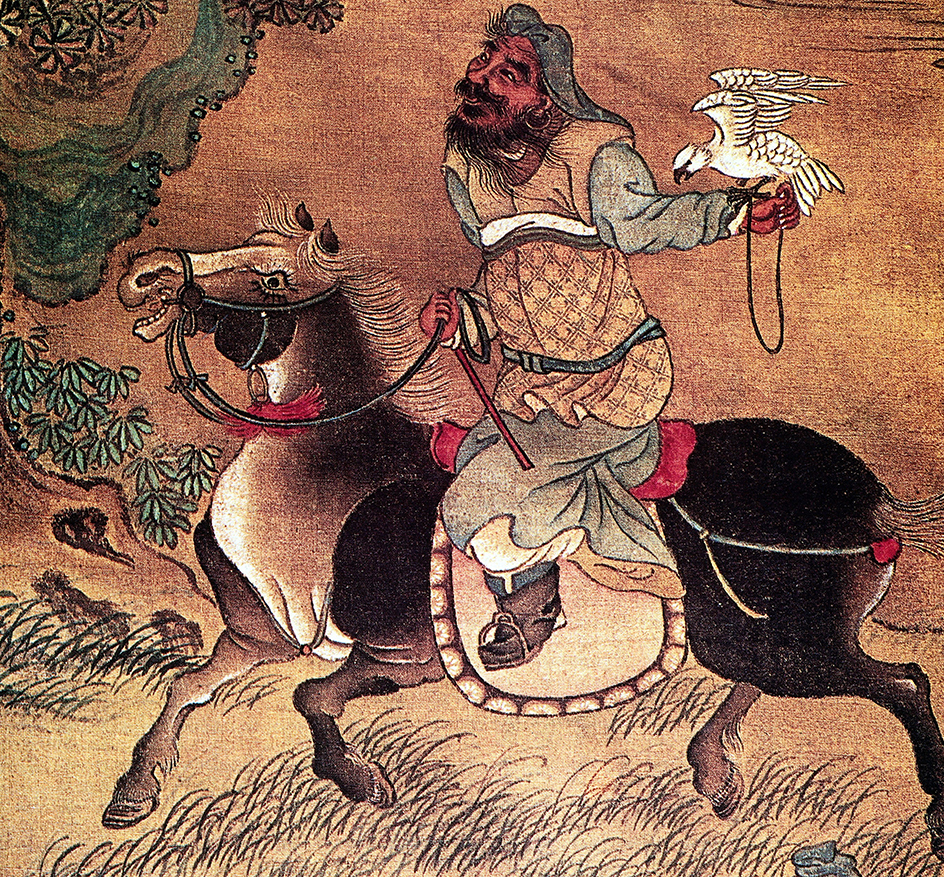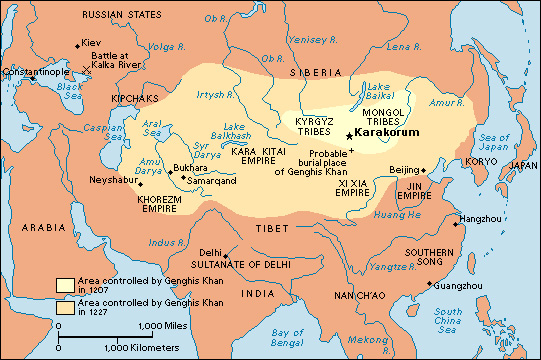Genghis Khan, << JEHNG gihs KAHN >> (1162?-1227), was a Mongol conqueror who founded the largest land empire in history. He ruled an area that stretched across central Asia from the Caspian Sea to the Sea of Japan (also called the East Sea). His name is also spelled Chingis or Jenghis.

Genghis Khan was a political and military genius who united Mongol and other nomadic tribes into a disciplined, effective fighting force. The Mongol armies were also known for their use of terror. When conquered territories resisted, the Mongols slaughtered the population of entire cities.
Genghis Khan was an intelligent man with superior organizational abilities. Although he had little interest in cultural matters, he promoted literacy among his people. He also established the first Mongol code of laws, called the Yasa or Yasak. The order he created throughout his vast empire promoted the growth of trade between China and Europe.
Rise to power.
Genghis Khan’s original name was Temujin, which means ironworker. His father was the chief of a small but influential Mongol tribe. Temujin inherited that position at about the age of 13, when members of an enemy tribe poisoned his father. But according to The Secret History of the Mongols, a Mongol epic written during the mid-1200’s, the members of the tribe abandoned their new chief. For a while, Temujin and his family lived a harsh, lonely existence. They owned few sheep or other livestock and had to dig roots for food.

Soon, however, Temujin began to attract followers, form alliances, and build an army. He used harsh training and strict discipline to create a superior fighting force. He also ensured that his troops were well equipped and that they quickly adopted new tactics and weapons. Temujin appointed officers on the basis of achievement instead of for their family connections, as was customary among the Mongols.
Temujin used his army to extend his power over neighboring tribes. By 1206, he had become ruler of Mongolia. That year, an assembly of Mongol chieftains proclaimed him Genghis Khan, a title that probably meant either universal ruler or invincible prince.
Conquests.
After becoming the ruler of Mongolia, Genghis Khan set out to conquer China. He first attacked a kingdom in northwestern China called Xi Xia (also spelled Hsi Hsia). He then invaded northeastern China and in 1215 took Beijing (Peking), the capital of the Jin (Chin) Empire.

In 1218, Genghis Khan broke off his assault on China and swept into central Asia. He crushed Khorezm, also spelled Khwarezm, a kingdom in what are now Uzbekistan and Turkmenistan. In 1220, he destroyed the cities of Buxoro and Samarqand (Samarkand) in present-day Uzbekistan and Neyshabur (Nishapur) in modern Iran. Two smaller armies invaded the plains north of the Caspian Sea. There, by 1223, they had conquered the Kipchaks, a Turkic people, and had defeated the Russians at the Kalka River.
In 1225, Genghis Khan turned to Xi Xia, which had allied with the Jin Empire. He conquered Xi Xia in 1227, just before his death on August 18 of that year. His grandson Kublai Khan completed the conquest of China in 1279.
